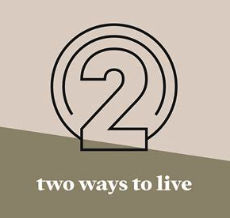Sydney Synod opposes adoption of Anglican Communion Covenant
Posted on October 11, 2011
Filed under News
 As had been widely expected, the Synod of the Diocese of Sydney today moved to oppose the adoption of the Anglican Communion Covenant.
As had been widely expected, the Synod of the Diocese of Sydney today moved to oppose the adoption of the Anglican Communion Covenant.
The text of the motion was as follows –
“Synod, noting the report on the Anglican Communion Covenant provided in response to resolution 19/10 –
(a) opposes the adoption of the Anglican Communion Covenant by the Anglican Church of Australia, and
(b) adopts the report and requests that a suitable form of the report be sent to the Standing Committee of the General Synod.”
For background reading, see –
- Sydney Synod Report 19/10 – a report from the Standing Committee. (PDF)
- The Faith Once for All Delivered – An Australian Evangelical Response to the Windsor Report. (2005)
- The Anglican Debacle: Roots and Patterns – Dr Mark Thompson.
- GAFCON.
From the report 19/10 – Comments on five theological objections to the Covenant:
a) Failure to give sufficient attention to historic Anglican formularies: This final text of the Covenant fails to give sufficient attention to the place of the formularies (the Thirty-nine Articles of Religion, the Ordinal and the Book of Common Prayer) in Anglican theology and practice. These ‘historic formularies of the Church of England’, while bearing authentic witness to the catholic and apostolic faith, are only ‘acknowledged and appropriated in various ways in the Anglican Communion’. While it is simply a matter of constitutional reality that the Articles do not have the same place or function in all the provinces of the Communion, the doctrine they espouse remains the doctrine of the Anglican churches. In other words they are not just further authentic witnesses to the catholic and apostolic faith; they exercise a particular function in the structure of our doctrine and life together (whether acknowledged or not). It is beyond dispute that the Articles (which, it should be noted, enjoin the reading of the Homilies) arose in a particular historical location and bear the marks of that location. England in the sixteenth century is very different from Africa or Asia in the twenty-first century. However, the few articles which are specific to that original situation (e.g. Article 37) can easily be distinguished from those articles treating biblical doctrine.
(b) Confused ecclesiology: The Covenant continues to operate with a confused ecclesiology. What is the basic unit of the denomination which would be able to enter into such a Covenant? Section 4 seems to rely upon the notion of Anglican provinces committing their member churches to this arrangement. However, such a notion of the nature and function of a province is quite novel and flies in the face of the two most enduring theological views: that the diocese and its bishop is the basic unit of ‘church’; or that the local congregation is the basic unit of ‘church’. The theological questions raised by giving provinces such a role in maintaining discipline are immense and yet this is assumed rather than established on the basis of Scripture.
(c) Inflated view of the Anglican bishop: The final text contains a highly inflated view of the Anglican bishop. Why, for instance is the teaching of bishops highlighted in §1.2.4? They are authorised teachers within our polity but so is every priest or presbyter and even each deacon. Neither the Ordinal or the Articles presupposes a distinction between them at this point. The teaching of all is to be tested by the Scriptures themselves. Similarly, to suggest that ‘Churches of the Anglican Communion are bound together … by mutual loyalty sustained through the common counsel of bishops in conference’ (§3.1.2) is problematic, notwithstanding the fact that this was the language of the Lambeth Conference of 1930.2 In contrast to the trend in some circles to elevate the Anglican bishop, recent history and the current crisis make clear the need to highlight the accountability of bishops to live and teach according to the Scriptures rather than to suggest they (or anyone else) stand over the Scriptures as in some way privileged interpreters.
(d) Inordinate power given to the Archbishop of Canterbury: This document involves ratifying an authority structure which gives an inordinate amount of power to the Archbishop of Canterbury. As mentioned above, he plays a significant role in each of the other three ‘Instruments of Communion’ which therefore cannot operate as effective counterbalances if he should himself be part of the problem at any point. His role in issuing invitations to Lambeth, chairing the ACC and also the Standing Committee, and convening the Primates Meeting raises serious questions about whether there are in reality four ‘Instruments of Communion’ or one.
(e) Failure to give due weight to the teaching of Scripture: Perhaps most serious of all, the Covenant does not differentiate – and has no mechanism for differentiating – between those actions which are a departure from the teaching of Scripture and others which involve no such departure. The Covenant’s focus on maintaining institutional unity blurs this most significant distinction. The abandonment of biblical teaching on human sexuality is of an entirely different character to the exercise of extra-diocesan jurisdiction for the sake of those faithful men and women who are suffering at the hands of an errant leadership. Neither the search for faithful episcopal oversight outside of the normal structures nor the approval of administration of the Holy Communion by persons other than presbyters are contrary to Scripture. On the other hand, both a public denial of the necessity of faith in Christ for salvation and an endorsement of homosexual activity are manifestly contrary to Scripture.
however, read the full report, officially received by the Synod on Monday 10th October, for the complete argument.
